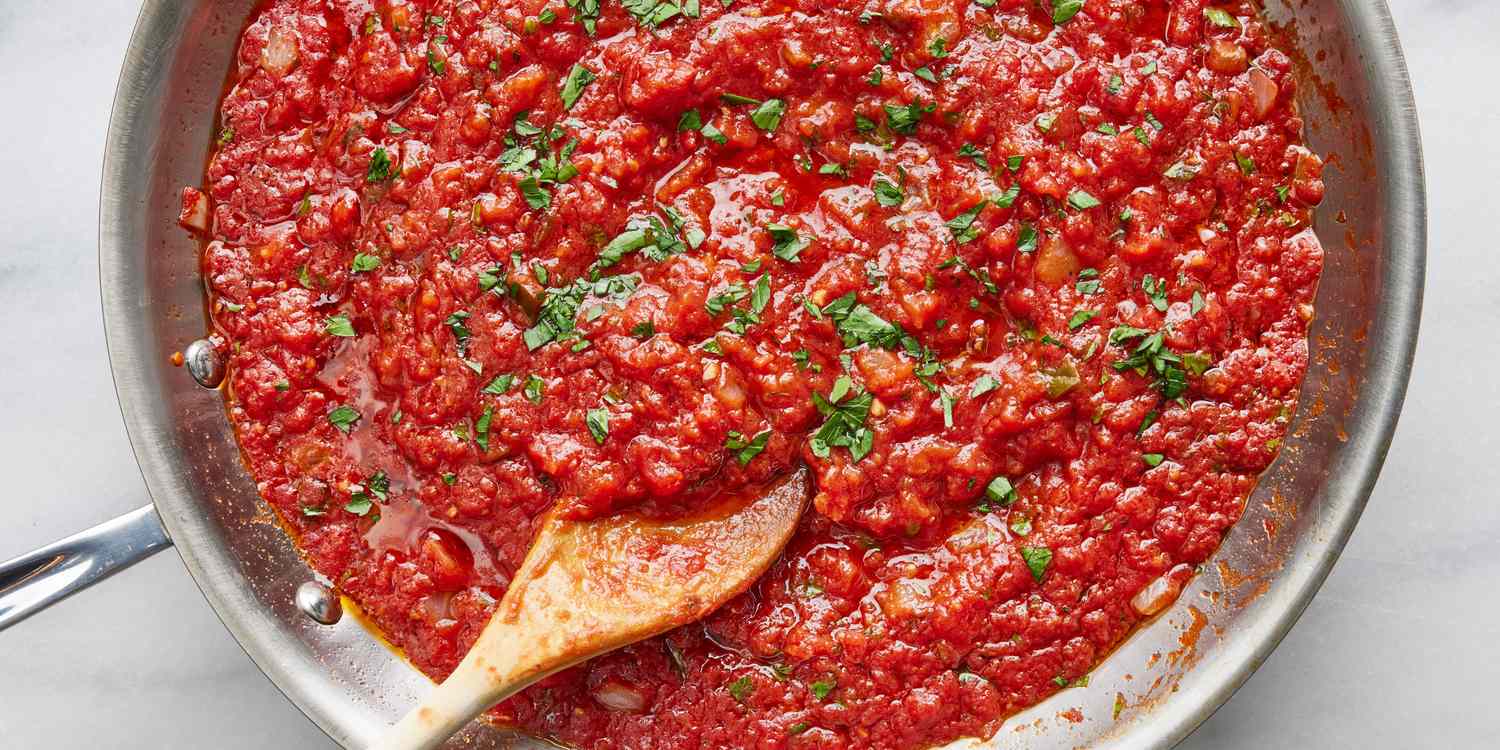:max_bytes(150000):strip_icc():format(jpeg)/11966-best-marinara-sauce-yet-DDMFS-4x3-078e494b66c4485e8efe0971473b3196.jpg)
As a server or a cook at restaurants, I was eager to discover new flavors and ingredients that had escaped me so far in my life. They were often common foods I just didn’t know about, like shiso, truffle oil, or my now-favorite hot sauce, Valentina.
At one of these restaurants, I made sauces for our pizza and pasta dishes, but it wasn’t just your average Italian cuisine. Rather, it was a fusion of Japanese-Italian food, serving unique flavor pairings that shocked and satisfied me on a daily basis.
One simple ingredient we’d added to our sauces—whether for pasta or for a saucy appetizer—was a staple of Japanese cuisine, and it completely changed the way I make sauces.
The Best Tip for Sauces
If you’ve ever eaten miso soup or traditional Japanese noodles, you’ve likely eaten dashi, a soup stock made from soaking dried bonito flakes and seaweed in water. This ingredient is integral to countless Japanese recipes. The quick workaround version, instant dashi, is just as useful.
This is the ingredient we would add to so many of our saucy recipes. Instant dashi is readily available at Japanese grocery stores and most Asian markets. I typically reach for the brand Hondashi by Ajinomoto, which is perhaps the most common. This instant form of dashi looks like small, powdery granules that, when added to water, makes dashi.
Photo by Setsuko Yoshizuka
Instant dashi need not be reserved for just soups and broths though—the granules can go right into pasta sauces, dipping sauces, glazes, or even in marinades for poultry and meat. The savory, umami-rich ingredient can add a boost of flavor to all kinds of saucy recipes. I love some in Honey Ponzu sauce, or in a creamy recipe like risotto.
“How is it possible that it’s going to be good as a sauce for chicken? Well, somehow it is,” says Chef John, who recently developed a butter chicken recipe using instant dashi. “Since it really does not taste like seaweed and dried fish, what it actually tastes like is pure umami, which is a word that is totally overused by chefs on the internet, or mostly me. And it simply refers to something that’s just super intensely savory.”
A little instant dashi can go a long way, so if you’re thinking about adding this ingredient to your next pasta or chicken marinade, add a small spoonful to your sauce and taste before adding more. Your dish will rival most restaurants’ as a result.
Recipes That Use Dashi
There are countless recipes that call for dashi, but so many more recipes without it that would benefit from the ingredient. Try adding some to your next pasta bake, braise for a meat, a pan sauce, or even a dipping sauce for wings and chips.
